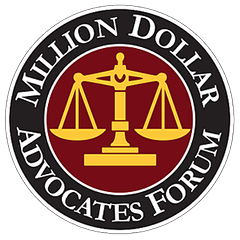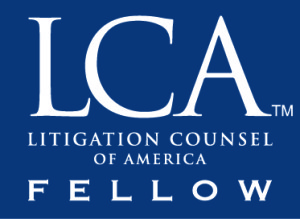Every year, millions of Americans trust healthcare professionals with their lives and well-being—and all too often, errors and negligence break that trust. When they do, it’s called medical malpractice.
The National Quality Forum found that approximately 2 million healthcare-associated infections occur every year in the U.S., contributing to approximately 90,000 deaths and over $4.5 billion in additional hospital costs.
Among Medicare patients alone, an estimated 134,000 adverse events occur every month, according to the Office of the Inspector General for the Department of Health and Human Services. Approximately 13.5 percent of hospitalized Medicare beneficiaries experienced an adverse medical event during their stay, representing 1 in every 7 patients. Physician reviewers involved in the study found that 44 percent of adverse medical events were clearly or likely preventable.
We trust medical professionals with our lives and well being. All too often, that trust is broken through errors and negligence.
Despite the rampant plague of medical errors, medical malpractice cases are among the most difficult to litigate and win. It is crucial to get an experienced medical malpractice attorney involved right away to ensure a thorough investigation and the best chance at recovering your losses.

After thirteen surgeries, multiple procedures and over two months in the ICU, all due to the negligence of one of my doctors, I was referred to Michael Maggiano to pursue a medical malpractice case. I had never been involved in a lawsuit in my life and from the moment I met Michael and his team at Maggiano, DiGirolamo & Lizzi I knew I was in extremely competent hands. Michael is the best lawyer you could imagine – he is intelligent, detail oriented, extremely knowledgeable and passionate about his work and his clients. Michael is a consummate professional and I will forever be impressed by, and indebted to, both him and his team. The entire staff at Maggiano, DiGirolamo & Lizzi is friendly, welcoming and do everything to make their clients comfortable. I would like to specifically thank Linda Reid and Bernadette Elbert who both went above and beyond to make my experience as comfortable as possible, from including me in all detailed correspondence to sending encouraging texts and even giving hugs when needed. Thank you so much to everyone at Maggiano, DiGirolamo & Lizzi – I highly recommend this law firm to anyone looking for a compassionate team to handle a personal injury claim.

Choosing Michael Maggiano and his firm was the best decision my husband and I made at a most horrific time in our lives. Multiple doctors, with whom we had trusting relationships, were confidently telling me that nothing was wrong when, in fact, that was not the case; allowing a cancer to grow over several years to an advanced stage.
Michael Maggiano and his incredible colleagues took our case, even though extremely complex. They patiently answered our endless questions, diligently pursued every aspect of our case, handled our anxieties; especially during trial preparation and settlement discussions. Due to their experience and skill, the final outcome was a sizable settlement.
We hope that this message helps you make the right decision during what is probably a difficult and trying time by speaking with Mike Maggiano.
What is Medical Malpractice?
The term “medical malpractice” is somewhat of a confusing term; technically, medical malpractice is medical, hospital, or nursing negligence. This means that when a physician, hospital, or nurse has failed to follow accepted care standards and that failure results in injury to the patient, the patient has a right to make a medical malpractice claim.
What Are the Different Types of Medical Malpractice?
The National Quality Forum has established a list of serious reportable events in healthcare. These events are commonly called “never events,” meaning they are serious, generally preventable, and represent a major concern for doctors, healthcare facilities, and the general public. The National Quality Forum’s serious reportable events are split into the following categories:
- Surgical events, which include surgery performed on the wrong body part; surgery performed on the wrong patient; wrong surgical procedure performed on a patient; unintended retention of a foreign object in a patient after surgery; and intraoperative or immediately postoperative death of an ASA Class I patient (i.e. a normal healthy patient).
- Product or device events, which include death or serious disability associated with the use of contaminated drugs, devices, or biologics provided by the healthcare facility; death or serious disability associated with the improper use or function of a device in patient care; and death or serious disability associated with intravascular air embolism that occurs while being treated in a healthcare facility.
- Care management events, which include medication errors such as a patient receiving the wrong drug, the wrong dose, or receiving medication at the wrong time, the wrong rate, after incorrect preparation, or with improper administration; maternal death or serious disability associated with labor or delivery in a low-risk pregnancy; death or serious disability associated with a hemolytic reaction after administration of incompatible blood; death or serious disability associated with hypoglycemia sustained in a healthcare facility; death or serious disability associated with failure to identify and treat hyperbilirubinemia in newborns (a condition in which there is too much bilirubin in the blood, leading to jaundice); stage 3 or 4 pressure ulcers acquired in a healthcare facility; death or serious disability due to spinal manipulative therapy; and artificial insemination with the wrong donor sperm or wrong egg.
- Environmental events, which include patient injury due to electric shock; oxygen or other gas lines containing the wrong gas or becoming contaminated by toxic substances; burns incurred by any source in a healthcare facility; patient injury due to a fall while being treated in a healthcare facility; and death, disability, or serious injury resulting from use of restraints or bedrails.
- Criminal events, which include any instance of care ordered by or provided by someone impersonating a physician, nurse, pharmacist, or other healthcare professional; abduction of a patient; sexual assault on a patient on the grounds of a healthcare facility; death or significant injury of a patient resulting from physical assault that occurs on the healthcare facility’s grounds.
Medical malpractice can encompass a variety of negligent acts, including errors in diagnosis, errors in treatment or illness management, failure to warn a patient of known risks, and lack of supervision or appropriate attention for a patient.
Verdicts and Settlements
$900,000 - Medical Negligence
To two children of a 35 year old woman who suffered cardiac arrest under anesthesia due to failure to diagnose congestive heart failure by her treating physicians and the anesthesiologist, all of whom cleared her for gall stone surgery despite signs pointing to an underlying heart condition.
$3,350,000 - Medical Negligence
To an automobile accident victim whose brain injury was undiagnosed by the emergency room physician. Subsequent emergency surgery failed to prevent significant brain damage which required prolonged rehabilitation and cognitive therapy, and requires the assistance of a walker.
$2,900,000 - Medical Negligence
To a diabetic male who suffered significant visual impairment following pancrease transplant surgery. Maggiano argued that the surgery carried substantial risks and was not necessary as the patient would have been served well with an insulin pump and avoided the risks and injury suffered.
How Can You Prove Fault in a Medical Malpractice Suit?
In order to prove medical malpractice, the plaintiff must show:
- A doctor-patient relationship existed: As long as the healthcare professional was treating you directly, this relationship is typically easy to prove. The relationship can be more difficult to prove if the doctor in question had a team or an assistant handling direct treatment (although it could have been the doctor’s orders or lack of face-to-face interaction that caused the injury in question).
- The healthcare professional was negligent: Medical malpractice suits require that the healthcare professional acted without reasonable care or skill during your treatment. To prove negligence, you must be able to show that the health provider acted in a way that a competent doctor would not have if presented with the same circumstances. In other words, it is not enough to prove that an error occurred or prove that a treatment did not have the desired effect; you must show that the action or error was outside the bounds of what a competent doctor would do in the same situation.
- The negligence caused an injury: The question here is whether or not the doctor’s actions were the true cause of the injury. Since medical malpractice often arises from patients who were already sick at the time, it can sometimes be difficult to prove that the healthcare professional’s actions were the proximate cause of death or injury, as opposed to natural progression of the injury or illness. Expert medical testimony is generally required to prove that a healthcare professional’s action or inaction led to the injury in question.
- The injury led to damages: The plaintiff must prove that the medical error caused specific harm, such as physical pain, additional medical bills, lost wages, etc.
Case Study
MDL won $10,000,000 for a middle aged widow suffering spastic quadriplegia, partial blindness and brain injury as a result of the failure to diagnose a pulmonary embolism following a knee replacement procedure.
What Can You Win in a Medical Malpractice Suit?
Patients injured by medical errors are eligible for compensatory damages, which include:
- Additional medical costs associated with the injury
- Future medical costs (such as rehabilitation) incurred by the injury
- Lost wages
- Lost earning capacity
- Pain and suffering
- Mental anguish
- Loss of enjoyment of life
- Loss of consortium
- Wrongful death (filed by the deceased’s dependents or heirs)
In cases of extreme negligence or reckless behavior, punitive damages can be awarded. These damages are intended to punish the healthcare provider for particularly egregious conduct and deter any such behavior in the future.
Compensatory damages in medical malpractice suits are not capped in New Jersey. However, punitive damages are limited to $350,000 or five times the amount of compensatory damages (whichever is greater).
There is a two-year statute of limitations on medical malpractice suits in the state of New Jersey. This means that, starting on the date of the injury, you have two years to file a medical malpractice claim or you will be barred from bringing the suit. In the event that the injury is not noticed right away, the clock starts running on the date the patient becomes aware of the injury or becomes aware the injury was caused by medical malpractice.
Contact a New Jersey Medical Malpractice Lawyer
Medical malpractice claims are among the most difficult to prove and litigate, which is why it is crucial to retain an experienced and dedicated trial attorney. Maggiano, DiGirolamo & Lizzi have many years’ worth of experience litigating personal injury and medical malpractice claims, and we will fight aggressively to hold healthcare professionals accountable for their negligence.
















